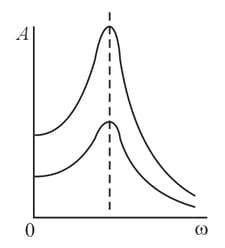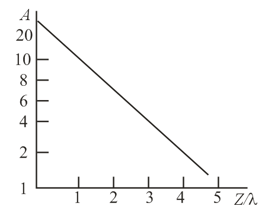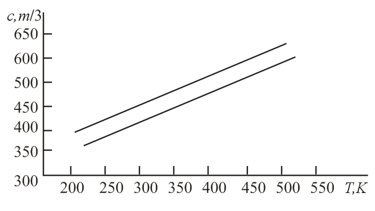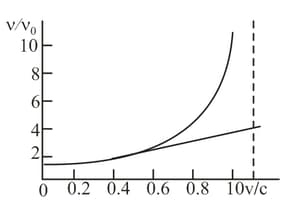The curve depicting the dependence of the amplitude of forced oscillations on the frequency of the driving force in a medium with no resistance tends to infinity as . Why is this situation meaningless not only from the physical standpoint but also from the mathematical standpoint? How does a system oscillate in a medium that has practically no resistance?

Important Questions on Oscillatory Motion and Waves
Two forced oscillations with the same natural frequencies have amplitudes that differ by a factor of for all values of the frequency of the driving force. In what parameter, among the amplitude of the driving force, the mass of the oscillating object, the elasticity coefficient, and the resistance of the medium, do these systems differ? It is assumed that these systems may differ only in one parameter.

A wave is propagating in a medium with damping. The distance from the source of oscillations (in units of the wavelength) is laid off on the horizontal axis and the common logarithm of the oscillation amplitude is laid off on the vertical axis. Using the graph shown in the figure accompanying the problem, write a formula that will link the amplitude with the distance.

The formula that expresses the speed of sound in a gas can be written in the following form:
Here is the specific heat ratio (the ratio of the specific heat capacity of the gas at constant pressure to the specific heat capacity at constant volume), is the pressure of the gas, and is the density of the gas. Using this formula as a basis, can we stipulate that upon isothermal change of the state the speed of sound in the gas grows with pressure?
The figure demonstrates the temperature dependence of the speed of sound in neon and water vapor on the log-log scale. Which straight line corresponds to the lighter of the gases?

The dependence of the frequency of oscillations registered by a receiver when the receiver and the source of sound approach each other depends on whether the source moves and the receiver is fixed, or whether the source is fixed and the receiver is in motion. The curves in the figure represent the dependence of the ratio of the received frequency of oscillations to the frequency emitted by the source on the ratio of the rate of relative motion to the velocity of sound. Which of the two curves corresponds to a moving source and which, to a moving receiver? The medium where the propagation of sound takes place (air or water) is assumed fixed.

